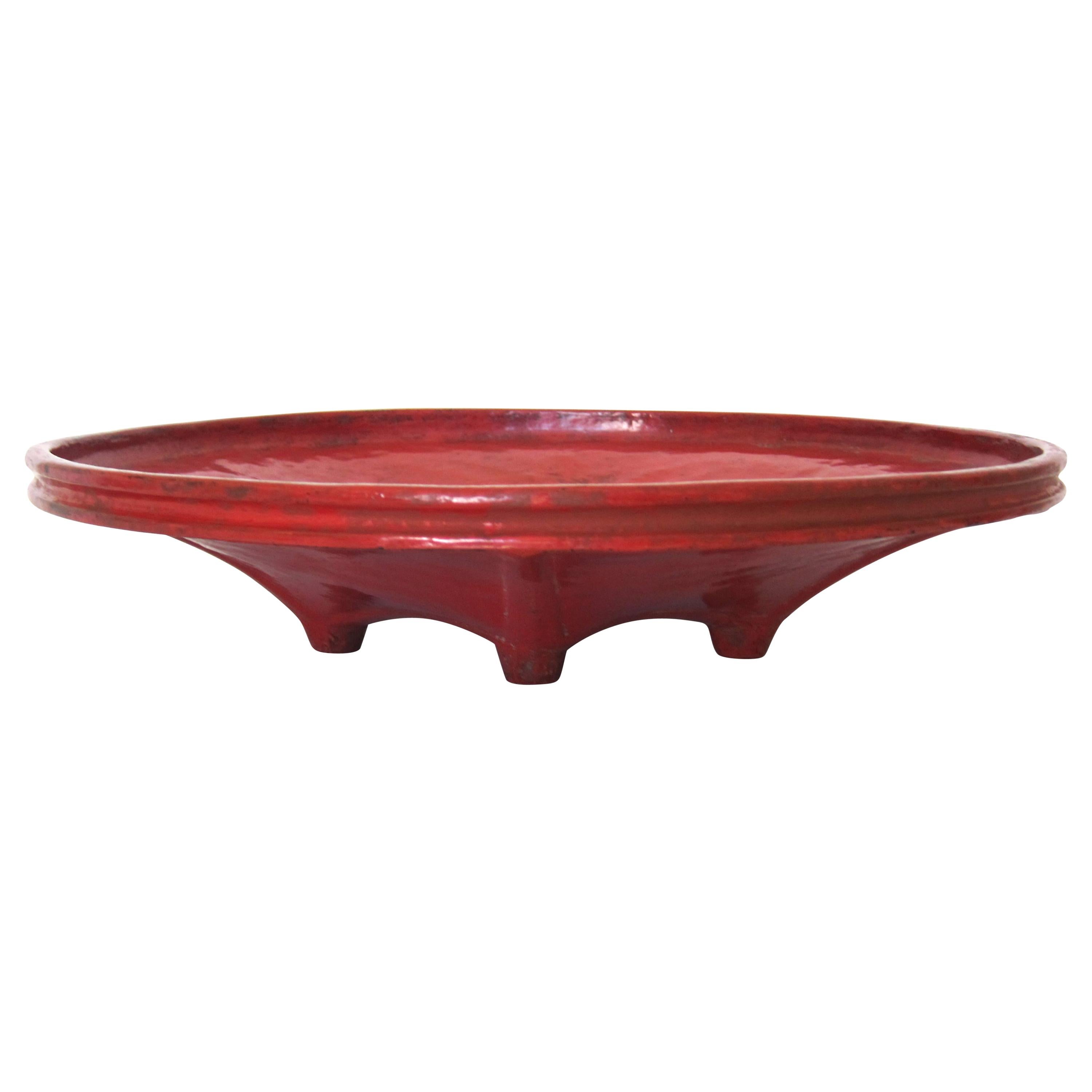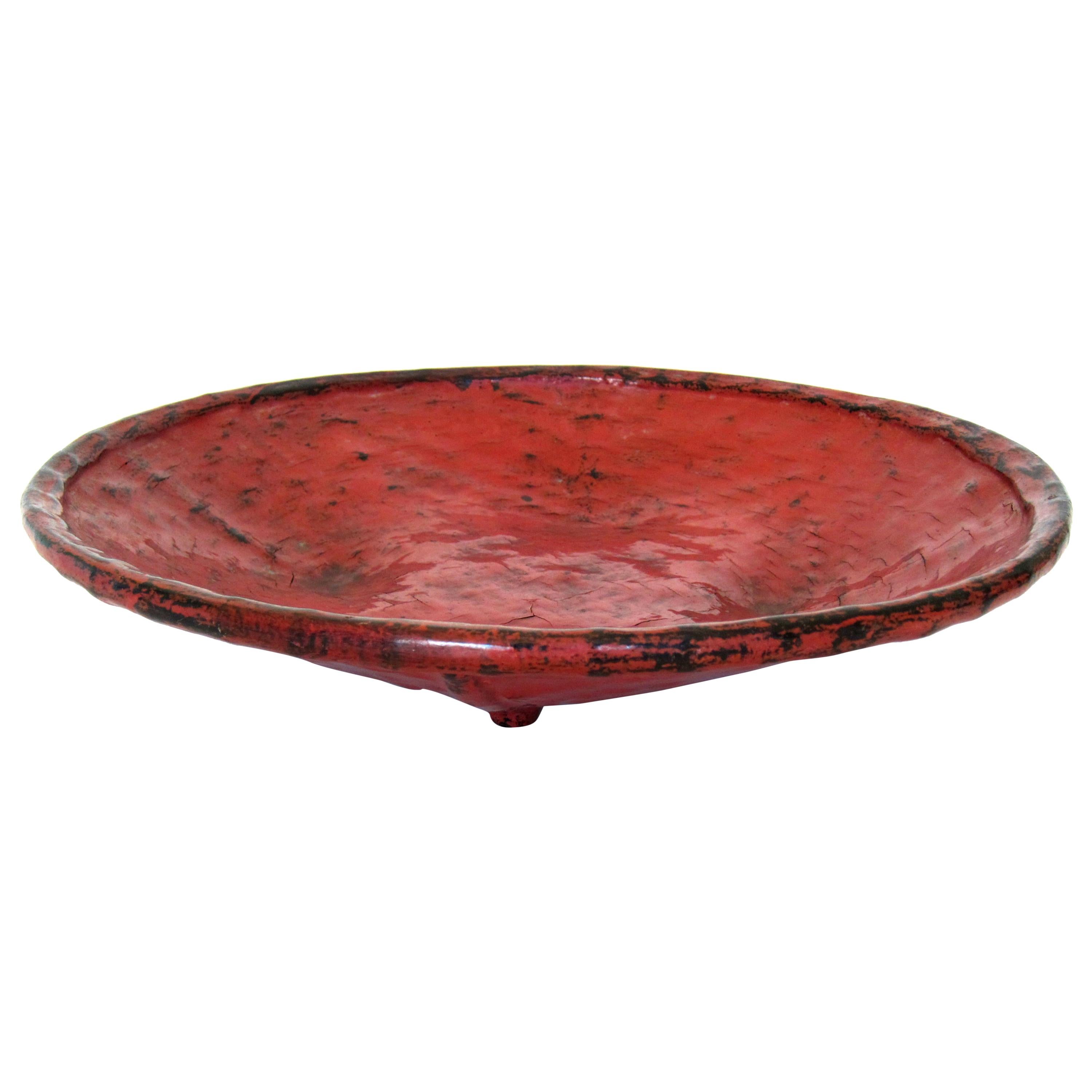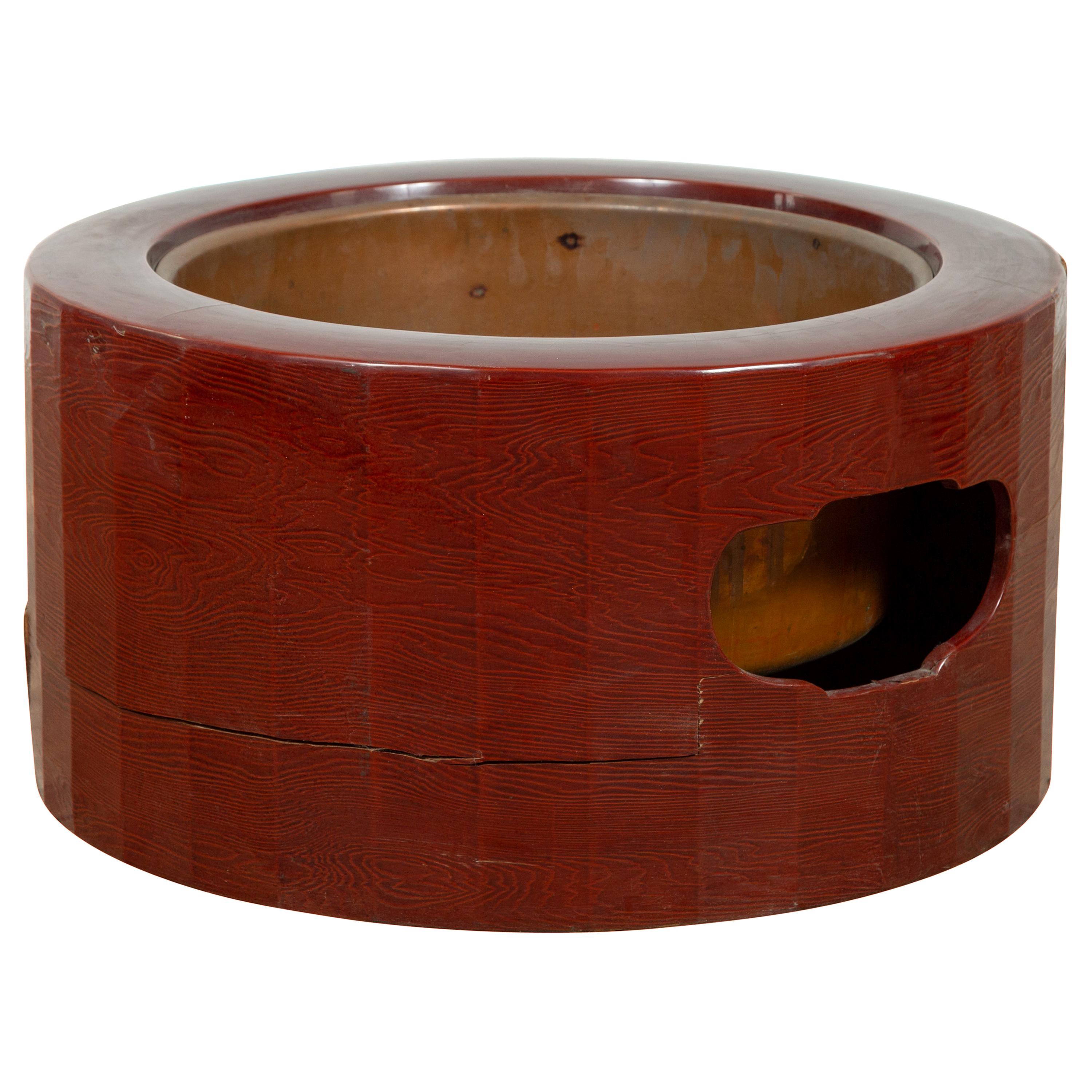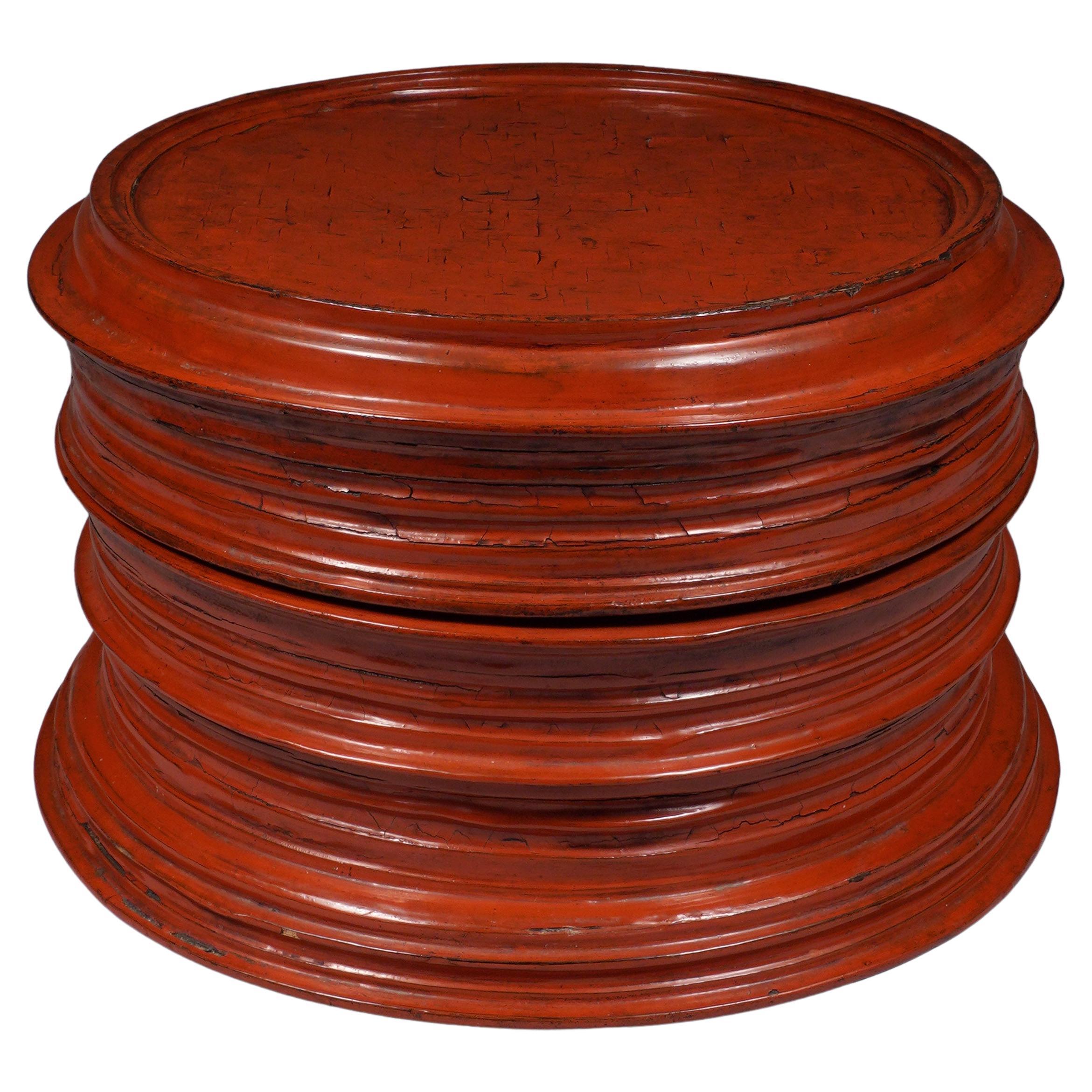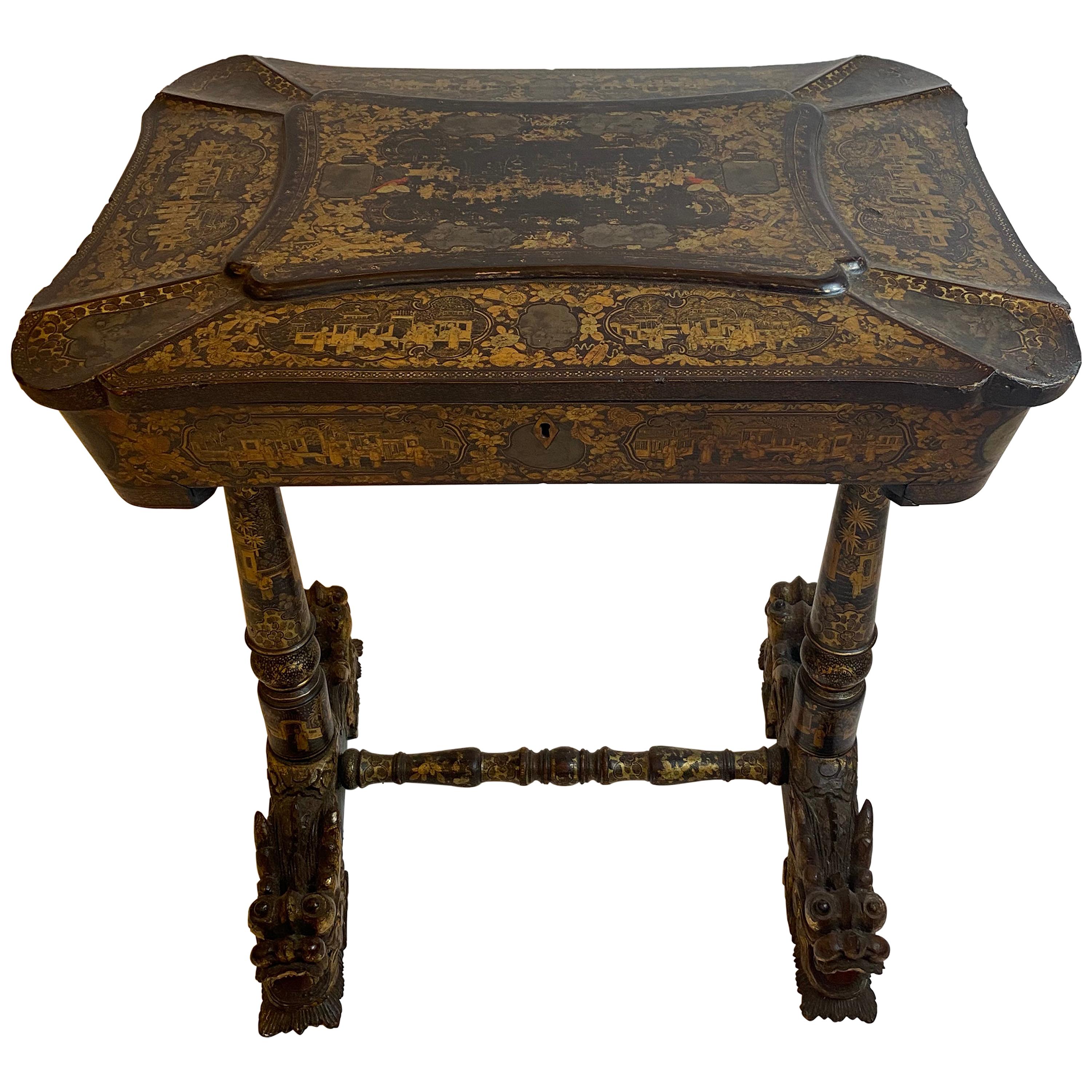Items Similar to Early 20th Century Burmese Lacquered Tray Stand, “Dang lan”
Want more images or videos?
Request additional images or videos from the seller
1 of 9
Early 20th Century Burmese Lacquered Tray Stand, “Dang lan”
About the Item
Burmese (Myanmar) lacquer ware has a long tradition dating back to the 13th century. Lacquer in Burma is called “Thitsi” meaning the sap of a Thitsi Tree (Melanhorrea Usitata). Typically, bamboo and wood are used as a frame or base in making lacquer work.
This table tray stand called a “Dang lan” and is used to hold dishes of food for the family meal.
This stand is constructed with woven bamboo that is then applied with many layers of lacquer. Black lacquered frame with red lacquered center, with a small black flower motif in the center.
Measurements: 21-1/2” diameter, 8-1/4” high.
- Dimensions:Height: 8.25 in (20.96 cm)Diameter: 21.5 in (54.61 cm)
- Materials and Techniques:
- Place of Origin:
- Period:
- Date of Manufacture:circa 1940
- Condition:Wear consistent with age and use.
- Seller Location:Atlanta, GA
- Reference Number:
About the Seller
5.0
Platinum Seller
These expertly vetted sellers are 1stDibs' most experienced sellers and are rated highest by our customers.
Established in 2006
1stDibs seller since 2010
477 sales on 1stDibs
Typical response time: <1 hour
- ShippingRetrieving quote...Ships From: Miami, FL
- Return PolicyA return for this item may be initiated within 2 days of delivery.
More From This SellerView All
- Early 20th Century Burmese Lacquered Tray, “Pagan Bya”Located in Atlanta, GABurmese (Myanmar) Lacquerware has a long tradition dating back to the 13th century. Lacquer in Burma is called “Thitsi” meaning the sap of a Thitsi Tree (Melanhorrea Usitata). Typica...Category
Early 20th Century Burmese Lacquer
MaterialsBamboo, Lacquer
- Early 20th Century Burmese Lacquered Tray, “Pagan Bya”Located in Atlanta, GABurmese (Myanmar) Lacquerware has a long tradition dating back to the 13th century. Lacquer in Burma is called “Thitsi” meaning the sap of a Thitsi Tree (Melanhorrea Usitata). Typica...Category
Early 20th Century Burmese Lacquer
MaterialsBamboo, Lacquer
- Early 20th Century, Large Burmese Betel Box, “Kun It”Located in Atlanta, GABurmese (Myanmar) Lacquerware has a long tradition dating back to the 13th Century. Lacquer in Burma is called “Thitsi” meaning the sap of a Thitsi Tree (Melanhorrea Usitata). Typica...Category
Early 20th Century Burmese Lacquer
MaterialsBamboo, Lacquer
- An Antique Japanese Lacquer Maki-e TrayLocated in Atlanta, GAA fan shape black lacquer tray from Japan circa 1910-30s, late Meiji to early Showa era. Elaborated decorated with a bundle of yomogi blossom in a very fine Maki-e technique using both gold and silver powders. There is a Japanese symbol on the top left, which represents yomogiu, stemming from yomogi (蓬), a wild plant that belongs to the chrysanthemum family and widely grown in Japan. This name yomogui is from a scene in the Tale of Genji...Category
Early 20th Century Japanese Japonisme Lacquer
MaterialsLacquer
- Early 20th Century Burmese Lacquer Offering Vessel, Hsun OkLocated in Atlanta, GABurmese (Myanmar) lacquer ware has a long tradition dating back to the 13th century. Lacquer in Burma is called “Thitsi” meaning the sap of a Thitsi Tree (Melanhorrea Usitata). Typically, bamboo and wood are used as a frame or base in making lacquer work. This covered offering vessel is called a “Hsun Ok...Category
Vintage 1920s Burmese Lacquer
MaterialsWood, Lacquer
- Early 20th Century Chinese Opera Hand PuppetLocated in Atlanta, GAThis Chinese opera hand puppet is dress in an elegant, embroidered silk dragon robe. The puppet head is of painted wood. The white face usually represents a villain. Puppetry is a major entertainment performance art in Chinese traditional theatre. This traditional performance art was widely used in religious and rural events to exorcise evil spirits. Puppets are also used in festivals such as the Chinese Ghost Festival to scare away ghosts, as well as significant events including births or marriage or to entertain audiences. The puppet theatre has developed into several different genres amongst different areas in China including rod puppets, glove puppets, shadow puppets and string puppets...Category
Early 20th Century Asian Toys and Dolls
MaterialsWood
You May Also Like
- Japanese Taishō Period Early Red Lacquered Circular Hibachi, Early 20th CenturyLocated in Yonkers, NYA Japanese Taisho period circular red lacquered hibachi from the early 20th century, with metal liner and lateral handles. Used for cooking or w...Category
Early 20th Century Japanese Taisho Lacquer
MaterialsMetal
- Early 20th Century Lacquer & Bamboo Cheroot Box, BurmaLocated in Point Richmond, CACheroot Box, Hsei-leit-taung Burma Early 20th century Bamboo, lacquer Measures: H: 9.25 in x D: 14 in :: 23.5 cm x 35.5 cm A specialty box for storing cigars. It exhibits an unusua...Category
Early 20th Century Burmese Tribal Lacquer
MaterialsBamboo, Lacquer
- Early 19th Century Chinese Export Lacquer and Gilt Work TableLocated in Brea, CAEarly 19th century Chinese export lacquer and gilt work table from the Qing Dynasty, with carved gilt dragon head feet, with the table of canted rectangular form, with moulded top, t...Category
Antique Early 19th Century Chinese Qing Lacquer
MaterialsLacquer
- Chinese Lacquered Book Reading or Book Stool Early 19th CenturyLocated in BILBAO, ESChinese Lacquered book reading or book stool early 19th century. Beautiful golden lacquerd nature design book standing or book reading stool. Measures ...Category
Antique Early 19th Century Italian Empire Lacquer
MaterialsWood
- Rare Early 19th Century Chinese Gilt Black Lacquer Writing BoxLocated in Brea, CAA truly rare beautiful and amazing piece. From the early 19th century of the Qing Dynasty in China, this gilt black lacquered writing box is ...Category
Antique Early 19th Century Chinese Qing Lacquer
MaterialsLacquer
- Early 19th Century Chinese Export Lacquer and Gilt Sew Working TableLocated in Brea, CAEarly 19th century Chinese export lacquer and gilt sew working table from the Qing dynasty, with carved gilt dragon head feet, with the table of canted rectangular form, with mounded...Category
Antique Mid-19th Century Chinese Qing Lacquer
MaterialsLacquer
Recently Viewed
View AllMore Ways To Browse
Retro Lacquer Furniture
Black Lacquered Furniture
Black Lacquer Furniture
Mid Century Lacquer
Mid Century Lacquered
Lacquered Midcentury
Century Furniture Black Lacquer
Century Black Lacquer
Century Black Lacquer Furniture
Retro Black Lacquer Furniture
Lacquered Base
Lacquered Wood Table
Black Lacquered Tables
Black Lacquer Table
Mid Century Black Lacquer
Lacquered Table Mid Century
Mid Century Wood And Lacquer
Lacquer Red
